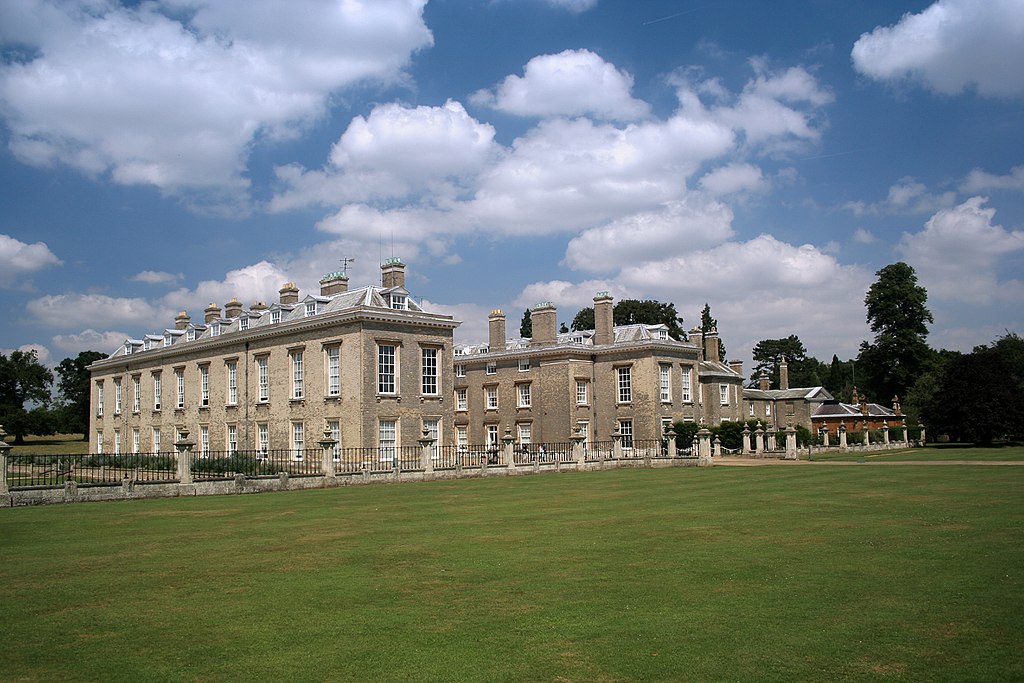
Although the name of Spencer is a storied one in British history, going back at least one thousand years to the Norman Conquest, the aristocratic family now has been found to have another even more historic tie — back to that of the Neanderthals.
That was the contention of researchers who recently discovered the remains of what they believe may be a Neanderthal settlement under the grounds of Althorpe, the Spencer family’s estate in West Northamptonshire.
Forty thousand years ago, Neanderthals may have made their own home on the beautiful estate, even decorating seashells — which have survived to this day under the grounds of the property, which is owned today by the late Princess Diana’s brother, Viscount Althorp.
As reported in the Telegraph, a trash pile left by the inhabitants of the area was uncovered in a recent dig that was requested by the Viscount himself in an effort to get to the bottom of another historical mystery.
Neanderthal people and Homo sapiens lived together before Neanderthals died out as district population
Roger Michel, the director of Great Britain’s Institute for Digital Archaeology, told interviewers “We don’t think the shells would have been the remnants of a prehistoric meal, as Althorp was even further from the sea then than it is today.
“They are also incised,” he points out, adding “They could have been used for decoration or as spurs of mother of pearl for jewelry.”
It was already known that Neanderthals, or Homo neanderthalensis, were living in Britain at the time, having arrived there an incredible 400,000 years ago — if not even sooner — according to experts.
Modern people, who belong to the genus Homo sapiens, came to the sceptered isle at about the very same time as the Neanderthals lived at Althorpe, 40,000 years ago, at a time when the distinct Neanderthal population in Europe was beginning to die out. It is possible, researchers say that the shells may have been worked on by either modern humans or Neanderthals.
The archaeologists found the remains not as a result of trying to uncover more Neanderthal history in Britain but in an effort to find the remnants of the village called Ollethorp, which had been tragically abandoned during an outbreak of the Black Death in the 1330s.
With the Althorp estate ostensibly inheriting its name from the ancient village, Charles Spencer, Viscount Althorp, who has himself published scholarly books on British history, was keen to get to the bottom of this mystery.
The Spencers have owned the property since the year 1508, with the manor house being constructed in 1688.
Neanderthals intermixed with Homo sapiens, dying out as separate population, around 40,000 years ago
There is no question that the village of Ollethorp the estate may once had been part of is quite ancient, since it was mentioned by name in The Domesday Book, an account of all the properties owned by his subjects that was commissioned by William the Conqueror in 1086 so that he could have a clear picture of how much taxes were owed him as the new ruler of England.
However, perhaps due to the ravages of the Black Death and the subsequent depopulation of many villages across Britain, by the year 1508, when the wool merchant John Spencer bought the lands making up the estate in 1508, there was no trace of it left.
In their research, archaeologists came upon the trash heap — also called a midden — which contained the decorated shells. Such things must have been deliberately transported inland from the sea; in addition, further evidence of Neanderthal or humans at the site was found in the form of flint and antlers that had been deliberately chipped and carved, the researchers say.
The island of Britain, which at times has been joined to the Continent during periods of glaciation, was most likely inhabited by human relatives even before Neanderthals are known to have lived there an incredible 400,000 years ago.
Researchers at University College London say that the first evidence of hominins living in Britain goes all the way back to 850,000 years before the present.
As seen in stone artifacts that were discovered in the coastal county of Norfolk, northeast of London. The majority of the peoples appeared to pass through these lands when the land bridges between the island and the Continent formed — but Neanderthals made the island their home for some time.
The Neanderthals most likely developed great technological advances, archaeologists now believe, even perhaps becoming the first artists to live in Europe, according to a report in Live Science.
Of course, the hunt goes on for more evidence of Ollehorp and those who were perhaps its oldest inhabitant, the Neanderthals, on the Spencer family estate, according to Michel.
“Our geophysical surveys of the site reveal many areas of interest that merit further exploration,” he told The Telegraph, adding “Althorp may very well tell the entire story of the settlement of Britain from the time of the earliest human habitations straight through to the HS2 (a planned high-speed railway line) that will pass not far from the estate.”
See all the latest news from Greece and the world at Greekreporter.com. Contact our newsroom to report an update or send your story, photos and videos. Follow GR on Google News and subscribe here to our daily email!



